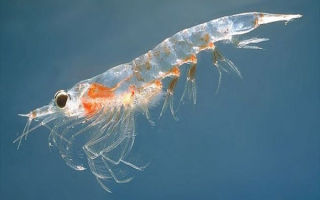Content
The properties, benefits and harms of krill have been studied by scientists and are necessary for people to study increasing the range of foods in their diet. Small crustaceans are an increasingly popular product that can be found in stores canned, fresh, boiled-frozen or frozen. The choice of the type of product depends on the dish for which it is needed and taste preferences.
What does krill look like?
Krill are small crustaceans that look like shrimp... There are two types of crustaceans in stores: euphausids and hyperid amphipods - Arctic planktons. The color of the creature in the shell is gray-green, the sizes vary from 1 to 6.5 cm.
Canned crustaceans resemble finely chopped shrimp. The product is light, white-cream in color with a dense texture.
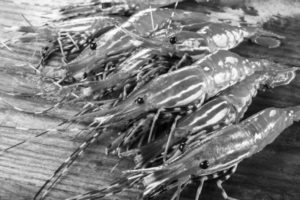
On the counter there are:
- Boiled frozen crustaceans.
- Canned.
- Frozen meat in layers.
- Krill flour.
- Pasta with pieces of crustaceans.
- Krill oil and substance for its preparation.
Taste qualities
Small crustaceans taste similar to shrimp, but with a slight sweetness. The taste is more intense, bright. Canned krill is salty (only meat and salt are added to quality canned food). Since it is a sea creature, the aroma of sea breeze and shrimp is felt.
Krill meat is tastier, more piquant than shrimp. Therefore, the product serves as a base and addition to many dishes for a festive and everyday table. Krill meat is denser than shrimp. The severity of the smell of iodine depends on the method of harvesting the goods and the place of catch.
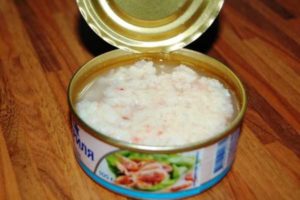
Krill Meat Composition and Benefits
Crustaceans are an environmentally friendly product that does not absorb harmful compounds. Therefore, eating small crustaceans is safe for humans. Crustaceans contain useful micro and macro elements, vitamins, minerals and nutrients necessary for humans. The product is rich in calcium, iodine, selenium, phosphorus, potassium, iron, sodium. The crustaceans contain the optimal amount of amino acids, fatty acids, vitamins of groups A, B, D, E.
The benefits of the product are manifested with a predisposition to a number of diseases:
- urolithiasis;
- tuberculosis;
- diabetes mellitus;
- obesity.
The product promotes recovery after strenuous work, sporting events, severe illnesses. Diet meat is indicated for losing weight, undergoing treatment, and maintaining a figure. The benefits of krill are also seen with high cholesterol.
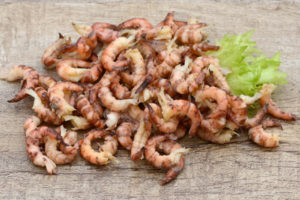
Krill is a healthy, environmentally friendly, dietary seafood. Regular consumption of crustaceans, rich in polyunsaturated and unsaturated acids, mineral compounds and vitamins, allows:
- Normalize hormone levels in the human body.
- Reduce cholesterol.
- Reduce the risk of obesity.
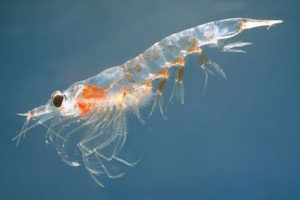
Also krill meat:
- It has a beneficial effect on the thyroid gland due to the high percentage of iodine in the composition.
- Stimulates the work of the urinary and reproductive systems, contributing to the prevention of diseases.
- Reduces the risk of developing atherosclerosis.
- Improves the work of the cardiovascular system, strengthening blood vessels.
- Prevents the development and appearance of prostatitis.
- Stimulates sexual activity in men.
Krill Meat Nutritional and Caloric Content
Krill is an easily digestible dietary product, the calorie content of which is 97 kcal per 100 g. Animal protein is easily digested, indicated for the nutrition of athletes with reduced immunity. 100 g of the product contains:
- 2.8 g carbohydrates;
- 1.8 g fat;
- 17.5 g protein.
The percentage of carbohydrates is 0 with a daily intake of 2000 kcal. Therefore, a useful product is used for losing weight and maintaining shape.
Protein makes up 25% of the daily value and is easy to digest. These properties are used in sports nutrition, hard physical labor, to restore strength and energy.

What to cook with krill meat
Krill is used in soups, sandwiches, canapés, cold and hot snacks. Pies, pizzas and pies stuffed with canned krill meat are common. Crustaceans are added to pilaf and some sauces. The product is popular in oriental recipes.
The following dishes are considered common:
- Sushi (krill is used instead of or with shrimp).
- Krill meat fried in soy sauce.
- Cold soup with crustacean and salmon.
- Spicy soup with peas and small crustaceans.
- Salad with krill, herring and artichokes.
Crustaceans go well with vegetables, rice, seafood and some meats.

The harm of krill meat and contraindications for use
Krill is not recommended for use in the presence of individual intolerance. You should also carefully consider the product if you are allergic to seafood and shrimp in particular.
When buying frozen, canned goods, they pay attention to the shelf life and appearance. The jar should not be swollen, damaged. The use of expired, low-quality products is harmful to human health, despite the beneficial properties.

Conclusion
The benefits and harms of krill, the properties of the product are determined by the chemical composition of the meat. The method of preparation and the quality of the raw materials are also important. Before introducing krill meat into the diet, it is recommended that you familiarize yourself with the contraindications, consult your doctor.

